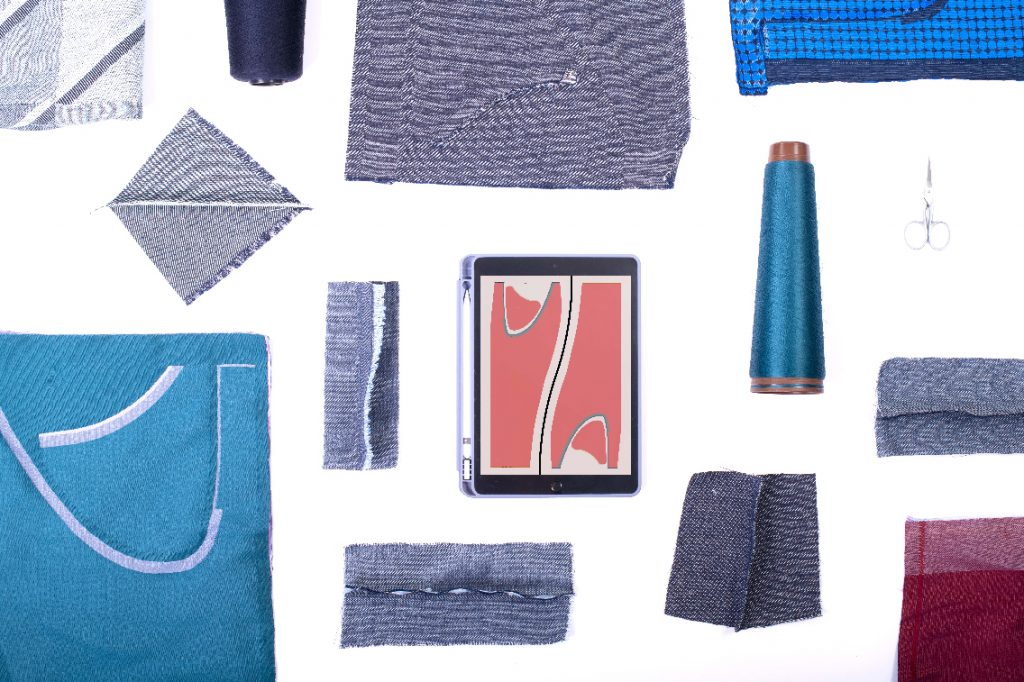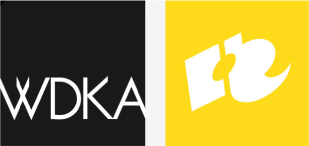The design research
Most woven textiles are created as flat, rectangular pieces of cloth that require a labor-intensive and wasteful cut-and-sew construction process to be turned into a garment. But what if it were possible to weave garments directly on the loom?
This is a question I asked myself when I first learned weaving about seven years ago. Since then, I have been working as a textile designer to figure out how we can weave objects on the loom and why there are so few examples of this way of producing.
At first, I only focused on the fabrication process, but many more questions started to emerge in my practice. For example, how can I communicate the possibilities and limitations of the machines to my collaborators, and how can I balance sustainability goals, technical possibilities, and user expectations?

In this research, I aimed to explore the tools and methods needed for textile designers to explore the space between textile and form. Due to the emphasis on cheap and fast flat weaving over decades, exploring the potential of woven textile-forms [1] has become challenging. However, through making samples and hands-on prototyping, we can slowly start changing these strongly-held beliefs in what textiles should be and what they can do. To support this process, I created a framework that helps textile designers with the fabrication, documentation, and communication of their work.
Threads of Insight: A research companion for woven textile designers can be found here

[1] Woven Textile-forms is a term coined by Holly McQuillan, to describe the simultanious fabrication of textile and form. All of the woven textile-form trousers I created during this research are made in collaboration with Holly McQuillan.
The new practice

As a textile design researcher, I will continue to explore textiles as more than just material, utilising a craft approach to both industrial and traditional textile manufacturing. In my research during the master design, I discovered that there are many limitations for woven textile forms in today’s industrial production. Therefore, I plan to investigate how traditional and craft techniques can inform new approaches to create woven textile-forms. This can help us identify the technology and methods we need in the future to fully realize the potential of woven textile forms.
In addition to garments, I see potential for woven textile-forms in other applications. I plan to collaborate with designers and researchers to explore these other possibilities, such as furniture and architectural structures. By doing so, I hope to discover new challenges and ways of working in my future research.
Moving forward, I will be applying the tools I developed during this Master’s program to my new practice. I will continue to research and explore new approaches to woven textile-design, and share my findings with others in the field.
the designer
“Not only the materials themselves which we come to know in a craft, are our teachers. The tools, or the more mechanised tools, our machines, are our guides, too.’’
Anni Albers

My name is Milou Voorwinden, a textile design researcher specializing in weaving. I discovered my passion for weaving during my final year at the product design department of ArtEZ University of the Arts in the Netherlands in 2016, and I have been weaving ever since. Today, I am an experienced jacquard designer and consider the loom to be the focal point of my practice. With each new loom I work on, I discover new opportunities, and by creating samples and prototypes, I gain knowledge about the workings of the looms and the system in which we use them. I find both state-of-the-art industrial looms and traditional hand-operated looms equally interesting, and I enjoy exploring the possibilities that lie between the history of textiles, how we produce them today, and what could be possible in the future.




